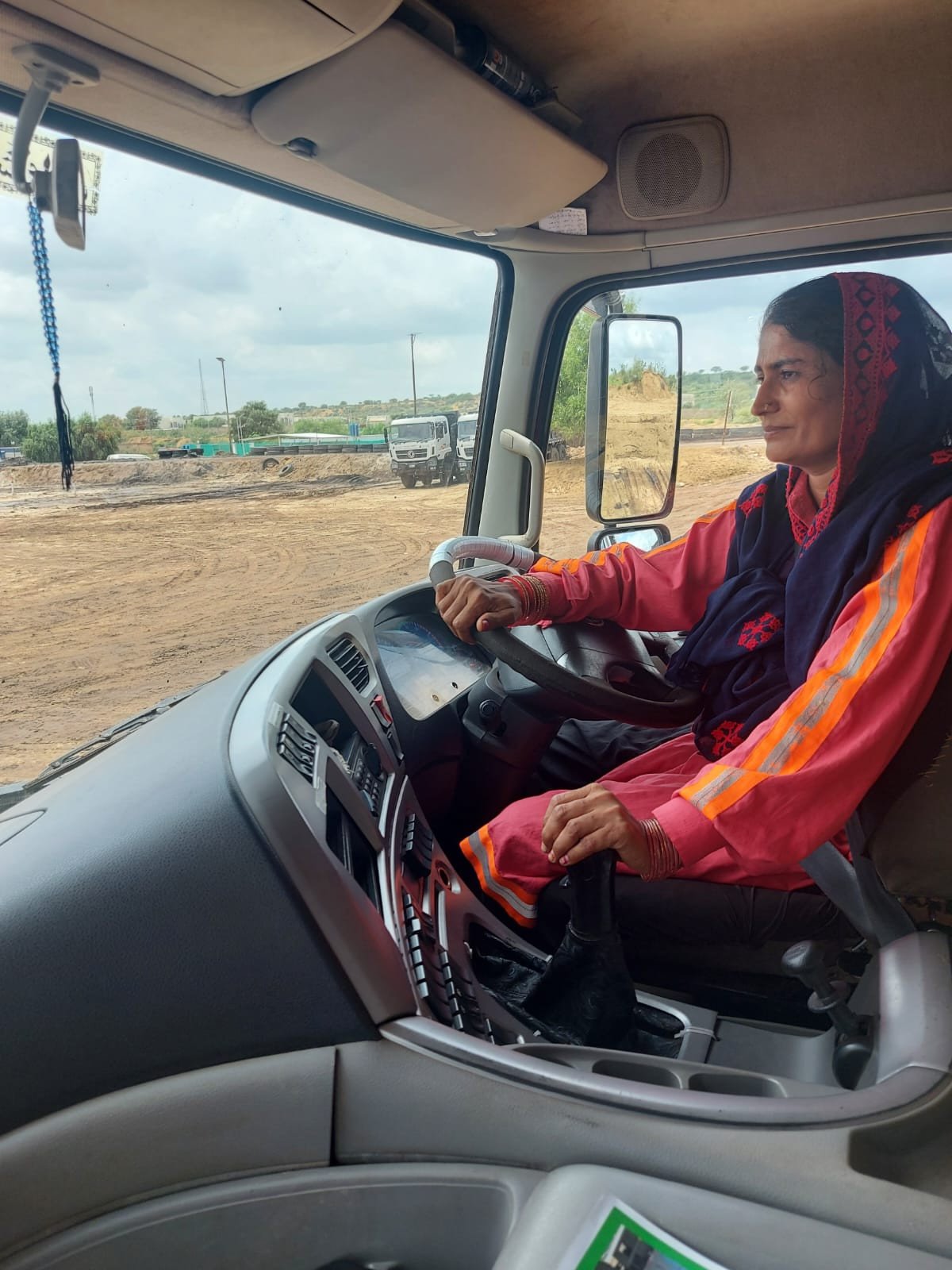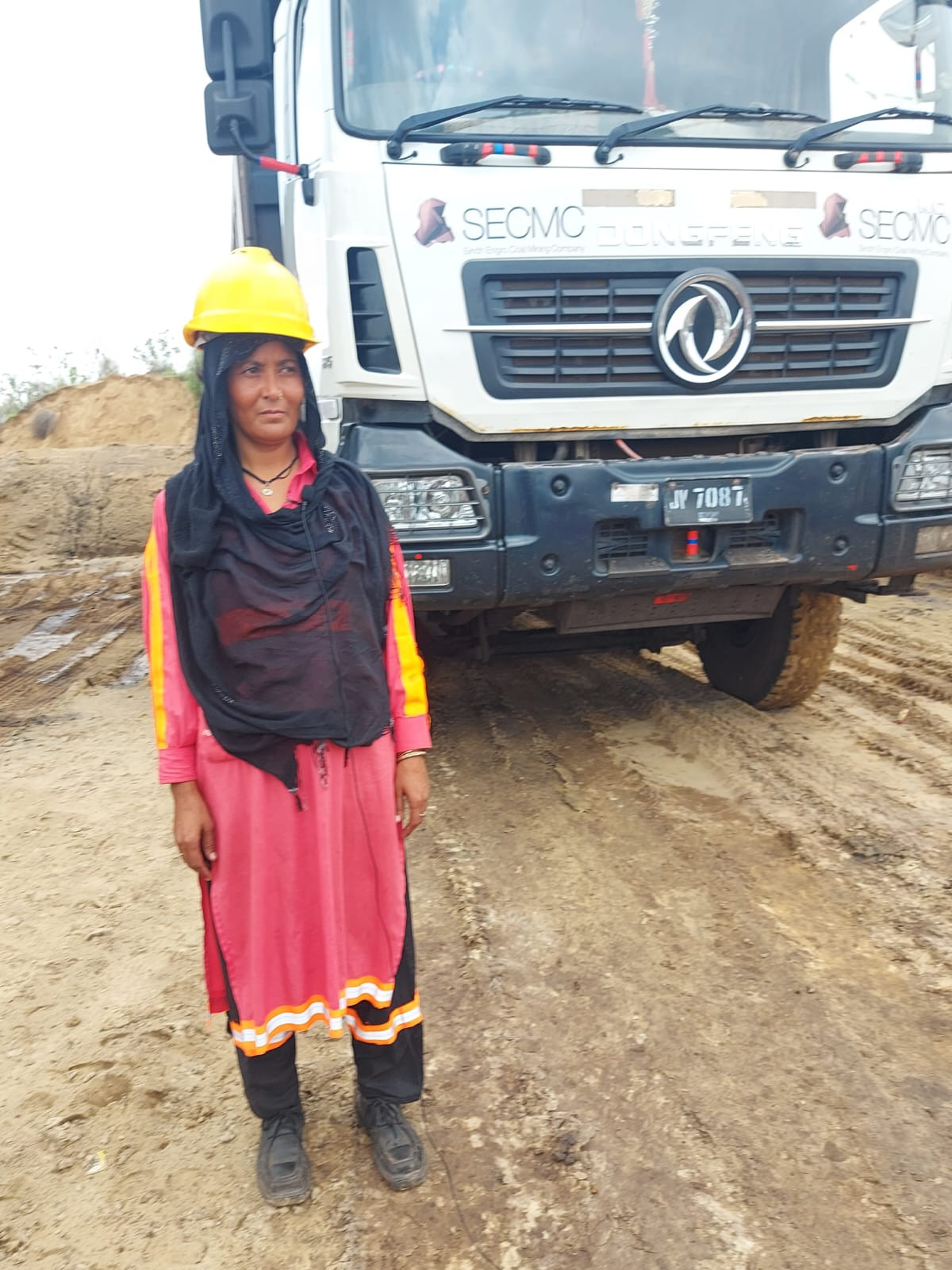An expansive land dotted with sand dunes under a hot scorching sun is what is generally visualized on hearing the word desert. Expecting a similar view, we embarked on our journey of approximately six hours and thirty-five minutes to visit Tharparkar for the first time.
Weather was pleasant and cloudy with sporadic light showers. As we reached closer to Thar, surroundings started unfolding in a very different yet pleasant way. The first glimpse of the majestic Karoonjhar Mountains was mesmerising, rendering us speechless. That was our very first introduction to the Thar Desert.
Thanks to the spells of torrential rains in the region, the sight of the “Green Thar” is a once in a lifetime experience. While travelling to our temporary residence, the slogan of “Thar Badlay ga Pakistan” was installed at a mountain and grabbed our attention. The slogan mainly points to the social activities and work opportunities created for the locals by the Thar Foundation, an organization that works to bring positive changes in the lives of not only the people of Thar but is also focused on the prosperity of the entire Pakistan.
Spreading over some 200,000 square kilometres, the Thar Desert is an arid region on the eastern side of the Sindh province, bordering the Indian state of Rajasthan. Thar is the only area of Pakistan with the Hindu population of fifty-nine percent. The majority of the Hindu community based in the urban areas comprises sixty-four percent of the total population.

Like in most other rural areas of the country, duties of Thari women include fetching water for their household from miles away, taking care of livestock and working in fields. In this backdrop, the concept of women dumper drivers and its swift adaptation is a surprising phenomenon. Women dumper drivers, some of whom belong to the Hindu community, in the desert area of Thar, have not only broken the glass ceiling but also gained economic independence, something unimaginable in that region.
“There was poverty, a long spell of unemployment and hunger encircling our lives. When I heard about the opportunity of working as a dumper driver in a mining firm, I decided to try my luck for a job that was traditionally considered a “men only” domain. Despite stern opposition and threats from my husband to abandon me, I approached the company and got the job that entirely changed not only mine but my entire family’s life, “said Meena Kumari, a dumper driver hailing from one of the most impoverished districts of Tharparkar.
Every day Meena Kumari, Rupa and other women drivers take the coal from the stockyard and transport it to the power plant in their gigantic dumpers. So far, they have completed approximately six to eight rounds of transportation of coal, but on busy days, the number of rounds could reach to twelve or fourteen.
Women’s participation in the work force in Thar is a mere eleven percent in comparison to that of men with eighty-three percent. The department with the maximum number of women workers is livestock in which their participation is fifty percent. In technical, transport and communications fields, the percentage is zero, according to the study “A Portrait of Thar—Baseline Report” conducted by the prominent economist Dr Kaiser Bengali and Iffat Ara.

Coal reserves in Thar were discovered in 1991, collectively by the Geological Survey of Pakistan and the United States Agency for International Development. The deposits are the sixteenth largest coal reserves in the world. Pakistan decided to utilize the Thar coal for power generation in 2014 under the multi-billion-dollar China Pakistan Economic Corridor, for which the Sindh Engro Coal Mining Company (SECMC) has been formed.
Excavation of lignite coal from the reserves started in 2019 to generate power when the country was facing long spells of load shedding due to energy crises and power shortfalls. The process, however, raised many eyebrows because of the adverse impact of coal on environment.
The other side of the picture is brighter as far as women empowerment is concerned. The black combustible rock provides financial independence to women belonging to a conservative and traditionally closed society. “Dumper driver’s job turned out to be a life changing experience for me and my family. I am getting around US$ 137 (PKR 30,000) salary per month, medical facilities, and other benefits. With our savings, we bought a plot worth US$ 1,385(PKR 300,000), a motor bike and a cow to fulfil our dairy needs, and now I am aiming to buy a car,” Nusrat of Mitthi said, with a smile on her face and her eyes sparkling. Nusrat described smashing of taboos and hurdles she crossed during her four-year long journey as a dumper driver as an uphill task.
“Before I started working, we were living hand-to-mouth. My husband, working as a construction labourer with daily wages of PKR 200 to 300 (US$0.86) was the only breadwinner of the family. When I started driving after three months of training, strong criticism and voices of social boycott from relatives and community made things difficult for me, but I did not want to see my children suffer again. Now they are going to school. My husband stays at home and takes care of children and household chores,” said Nusrat, the forty-year-old mother of a son, ten, and a daughter, eight months old.
In the SECMC’s CSR’s women empowerment Women Dump-Truck Driving (WDTD) Program in the Thar Coal Block II project, selected candidates undergo a comprehensive driving training phase during which they are paid a stipend of Rs 15,000 each month. At the completion of training, they are employed and earn, from Rs 25,000 to Rs 40,000.
To date, SECMC has trained seventy women, out of which currently twenty-five are employed at the site to transport coal from the stockyard to the power plant. Women dumper drivers carry thirty tons of coal from stockyard to power plant. The weight of truck is eighteen ton, and a cumulatively loaded truck weighs forty-eight tons.

Talking about how it all started, Chief Executive Officer of SECMC Amir Iqbal said, “Since the region ranks low on the Human Development Index, we wanted to bring maximum employment opportunities here, with keen focus towards bringing females into active workforce as well, something that was completely unheard of in this region. Our pioneering Dump Truck Drivers Training Program for Women is a creative way to economically empower the women of Thar and sow the seeds for bridging the gender gap as much as possible in this area. With incremental steps we hope to continue championing women in workforce in Thar and beyond.”
Thari women dumper drivers not only bring financial stability for their families but also become a role model for young girls of the region who have no education and skills. Increasing level of social acceptance is an encouraging sign for the marginalized Thari women to get more economic freedom that would make their lives better than they are today.
Asifa Idrees is a Karachi based freelance journalist who tweets @asifaidris. All information and facts provided are the sole responsibility of the writer.
